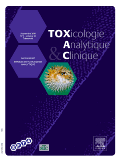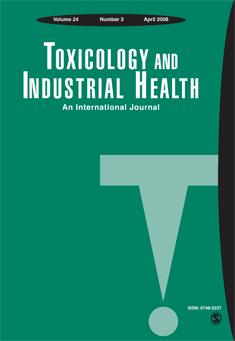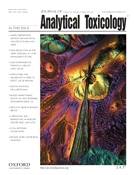
Toxicology Communications
Scope & Guideline
Exploring the impact of toxins on health and environment.
Introduction
Aims and Scopes
- Clinical Toxicology:
The journal emphasizes clinical toxicology, including case reports, treatment protocols, and management strategies for various poisonings and toxic exposures. This includes the use of antidotes, supportive care, and novel therapeutic approaches. - Epidemiology of Poisoning:
Research on the epidemiology of poisonings, including trends in substance use, demographic studies, and the impact of environmental factors on poisoning rates, is a core focus. - Toxicological Mechanisms:
The journal publishes studies that explore the mechanisms of toxicity at a biochemical and molecular level, contributing to the understanding of how various substances cause harm to human health. - Public Health and Policy:
Toxicology Communications also addresses public health implications of toxic exposures, advocating for policy changes based on empirical evidence and supporting the development of guidelines for poison management. - Emerging Drugs and Substances:
The journal keeps abreast of new psychoactive substances, drug overdoses, and trends in substance abuse, providing insights into their clinical implications and management.
Trending and Emerging
- Substance Abuse and Misuse:
There is a growing focus on the epidemiology of substance abuse, particularly regarding prescription stimulants and opioids, reflecting the ongoing public health crisis and the need for effective management strategies. - Impact of COVID-19 on Poisoning Trends:
Research examining the effects of the COVID-19 pandemic on poisoning incidents, including increased exposures to hand sanitizers and other household substances, is emerging as a vital area of inquiry. - Pediatric Toxicology:
An uptick in studies focused on pediatric poisoning cases indicates an increasing awareness of the unique vulnerabilities of children and the need for tailored interventions. - Environmental Toxins and Public Health:
Research on environmental toxins, such as PFAS and lead contamination, is gaining traction as public health concerns grow regarding the long-term effects of these exposures on population health. - Use of Technology in Toxicology:
Innovative methodologies, including the application of artificial intelligence and big data analytics in toxicology research, are emerging, showcasing the integration of technology in understanding and managing toxic exposures.
Declining or Waning
- Traditional Poisoning Treatments:
There has been a noticeable decrease in studies focusing on traditional treatment methods for poisoning, such as the use of activated charcoal, as new evidence-based approaches and antidotes gain prominence. - Occupational Toxicology:
Research related to occupational exposures and the toxicology of industrial chemicals appears to be declining, possibly overshadowed by the urgent need to address recreational drug use and environmental toxins. - Animal Envenomation Studies:
While still important, the frequency of case studies and research on animal venom (e.g., snake bites) has diminished, as the focus shifts towards broader public health implications and management of substance abuse. - Chemical Warfare and Bioterrorism:
The urgency of research into chemical warfare agents and bioterrorism appears to have waned, with fewer publications addressing these topics in recent years.
Similar Journals

Toxicologie Analytique et Clinique
Shaping Tomorrow’s Toxicology Through Rigorous AnalysisToxicologie Analytique et Clinique is a distinguished journal published by ELSEVIER MASSON SAS EDITEUR, specializing in the ever-evolving fields of toxicology and clinical analysis. With its ISSN number 2352-0078 and E-ISSN 2352-0086, this journal has been contributing to the scientific dialogue since its inception in 2014, with a converged publication timeline extending to 2024. Despite its current standing in the Q4 category for both Health, Toxicology and Mutagenesis, and Toxicology in the 2023 metrics, as indicated by its rankings on Scopus, Toxicologie Analytique et Clinique remains a crucial platform for disseminating vital research within these domains. The journal's focus on analytical and clinical toxicology makes it an invaluable resource for researchers, practitioners, and students, seeking to enhance their understanding and methodologies in toxicological studies. As a vital contributor to the academic landscape, Toxicologie Analytique et Clinique aims to provide a rich repository of knowledge that promotes innovation and safety in clinical practices and environmental science.

JOURNAL OF BIOCHEMICAL AND MOLECULAR TOXICOLOGY
Advancing the Frontiers of Toxicology and BiochemistryJournal of Biochemical and Molecular Toxicology, published by Wiley, plays a pivotal role in the advancement of knowledge within the fields of biochemistry, toxicology, and molecular biology. Established in 1998, this esteemed journal has garnered a significant reputation, evidenced by its current placement in the Q2 quartile across several categories, including Biochemistry, Health, Toxicology and Mutagenesis, and Medicine. With an ISSN of 1095-6670 and an E-ISSN of 1099-0461, it serves an international audience, offering critical insights and innovative research that shape our understanding of biochemical interactions and toxicological assessments. While it does not operate on an open-access model, the journal ensures rigorous peer review and high-quality publication standards, making it a valuable resource for researchers, professionals, and students dedicated to the exploration of molecular toxicology. The journal's recognized impact within the scientific community is reflected in its competitive rankings among specialized journals, fostering significant contributions to both academic and applied contexts.

Molecular & Cellular Toxicology
Illuminating the pathways of toxicity in health and environment.Molecular & Cellular Toxicology, published by the Korean Society Toxicogenomics & Toxicoproteomics (KSTT), is a significant journal in the field of toxicology, providing crucial insights into molecular mechanisms underlying toxic responses. With an ISSN of 1738-642X and E-ISSN 2092-8467, this journal serves as a vital platform for researchers, professionals, and students interested in the latest findings and advancements in toxicology, health, and environmental science. Although it operates under a subscription model, it maintains rigorous peer review standards, contributing to its respectable Q3 classification in Health, Toxicology and Mutagenesis, and its Q2 standing in Pharmacology, Toxicology, and Pharmaceutics. The journal, intersecting with innovative aspects of pharmacology and public health, aims to foster a deeper understanding of toxicological impacts on cellular processes and overall health. Located in Germany and supported by a dedicated editorial board, Molecular & Cellular Toxicology stands out in the academic community, encouraging interdisciplinary discourse and collaboration to address critical toxicological challenges. Engage with us for cutting-edge research that informs and shapes the future of toxicological science.

International Journal of Medical Toxicology and Forensic Medicine
Exploring Critical Issues in Toxicology and Forensic ScienceInternational Journal of Medical Toxicology and Forensic Medicine, published by Shaheed Beheshti Medical University of Medical Sciences & Health Services, is a pioneering platform dedicated to advancing knowledge within the critical fields of toxicology and forensic medicine. Established as an Open Access journal since 2011, it ensures wide dissemination of research findings, catering to a global audience of researchers, healthcare professionals, and students. With an ISSN of 2251-8762 and an E-ISSN of 2251-8770, the journal covers a diverse range of topics relevant to the medical community, albeit being categorized as Q4 in both Pathology and Forensic Medicine and Toxicology in 2023, indicating emerging significance in these disciplines. Geographically based in Tehran, Iran, it aspires to bridge gaps in scientific research and practice, particularly in regions where such expertise is critical. The journal welcomes submissions that investigate pressing issues in medical toxicology and forensic science, fostering an interdisciplinary dialogue essential for innovative solutions and improved public health outcomes.

TOXICOLOGY AND INDUSTRIAL HEALTH
Empowering professionals with insights on toxic substances and safety.TOXICOLOGY AND INDUSTRIAL HEALTH, published by SAGE PUBLICATIONS INC, is a premier journal in the field of toxicology, public health, and environmental health, with a significant history dating back to 1985. With its ISSN 0748-2337 and E-ISSN 1477-0393, the journal provides a platform for disseminating groundbreaking research and comprehensive reviews that address the complexities of toxic substances in industrial and occupational settings. Despite its Q3 ranking among peers in health, toxicology, and public health, this journal is becoming increasingly influential, reflected in its growing citation metrics. Researchers and professionals benefit from its commitment to fostering knowledge in both theoretical and practical contexts, making it an essential resource for those dedicated to advancing understanding in this vital field. The journal's main objectives include promoting research addressing the implications of toxicology on health and safety standards across industries, ensuring accessibility to current studies for a global audience. Overall, TOXICOLOGY AND INDUSTRIAL HEALTH plays a critical role in bridging the gap between research and real-world applications, proving invaluable to students, professionals, and researchers alike in their pursuit of enhancing public health and environmental safety.

Frontiers in Toxicology
Unveiling the Complexities of Pharmacological ImpactsFrontiers in Toxicology, published by Frontiers Media SA, is a prominent open-access journal dedicated to advancing the understanding of toxicological science. Established in 2019, it serves as a vital forum for innovative research, offering insights into the pharmacological impacts and toxicological profiles of various substances. With its international reach based in Switzerland, this journal has quickly ascended in the academic community, achieving a notable Q1 ranking in Pharmacology, Toxicology and Pharmaceutics (Miscellaneous) and a Q2 ranking in Toxicology as of 2023. The journal is indexed in Scopus, where it ranks #8 out of 43 in its primary category, underscoring its influence and relevance in the field. The scope encompasses cutting-edge studies on the mechanisms of toxicity, including both human and environmental impacts, making it an essential resource for researchers, professionals, and students alike. By promoting open access to high-quality research, Frontiers in Toxicology plays a crucial role in enhancing knowledge sharing and fostering collaboration across disciplines.

JOURNAL OF ANALYTICAL TOXICOLOGY
Empowering Safety Through Analytical ExcellenceJOURNAL OF ANALYTICAL TOXICOLOGY, published by Oxford University Press Inc, stands as a leading platform in the field of analytical chemistry and toxicology, focusing on the rigorous exploration of methodologies and advancements in the detection of toxic substances. Since its inception in 1977, this journal has continually contributed to the scientific community, providing researchers and professionals with vital insights into chemical health, safety, and environmental implications. With an impressive Q1 ranking in both Analytical Chemistry and Chemical Health and Safety, along with reputable Q2 rankings in Environmental Chemistry and Toxicology, the journal maintains its critical standing in vibrant academic communities, ensuring the dissemination of high-quality research. Although it currently does not offer open access, articles are made available via institutional subscriptions, allowing widespread access to its valuable findings. Located in the United States, the journal contains a wealth of knowledge poised to benefit scientists and scholars engaged in toxicological research, emphasizing its importance in enhancing public health and safety.

DRUG AND CHEMICAL TOXICOLOGY
Championing interdisciplinary research in toxicology.Drug and Chemical Toxicology is a well-respected journal in the fields of toxicology, pharmacology, and public health, published by Taylor & Francis Ltd. Since its inception in 1978, this journal has diligently explored the effects and mechanisms of chemical exposures on health and the environment, fulfilling a crucial role in advancing scientific understanding and safeguarding public health. The journal is indexed across prestigious databases and features an impressive array of articles categorized within the Q2 and Q3 quartiles across various categories in 2023, reflecting its significance in Chemical Health and Safety as well as Environmental and Occupational Health disciplines. With an extensive reach and a focus on interdisciplinary research, Drug and Chemical Toxicology offers a rich repository of original research, reviews, and methodological advancements, catering to a diverse audience of researchers, professionals, and students dedicated to the betterment of safety and health standards. Although not an open-access publication, its articles are widely accessible to the academic community, ensuring that critical innovations and insights are shared for the greater good.

Mycotoxin Research
Pioneering Insights into Mycotoxin ImpactsMycotoxin Research, published by Springer Heidelberg, is a vital interdisciplinary journal dedicated to the exploration and study of mycotoxins, their impacts on health and environment, as well as strategies for mitigation. With a solid presence in the fields of Biotechnology, Microbiology, and Toxicology, it has earned a respectable Q3 ranking and continues to facilitate the dissemination of impactful research from 1985 through to 2024. The journal caters to a diverse audience, including researchers, professionals, and students, providing a platform for original research articles, reviews, and case studies that contribute to the understanding and management of mycotoxins. Although it does not offer open-access options, the journal remains a critical resource, engaging its readers with cutting-edge findings and advancements that shape the future of health and safety regarding mycotoxin exposure. With Scopus rankings reflecting its relevance—44th in Toxicology, 113th in Biotechnology, and 71st in Microbiology—Mycotoxin Research stands as an essential publication for anyone dedicated to advancing knowledge in these critical scientific domains.

Cardiovascular Toxicology
Advancing insights into toxic influences on cardiovascular health.Cardiovascular Toxicology is a pivotal journal dedicated to advancing the understanding of the interplay between toxic substances and cardiovascular health. Published by HUMANA PRESS INC, this journal serves as a critical resource for researchers and professionals in the fields of cardiology, toxicology, and molecular biology. With an ISSN of 1530-7905 and an E-ISSN of 1559-0259, it has established itself as a key source of high-quality research since its inception in 2001, continuing to contribute valuable insights through 2024. The journal enjoys a robust reputation, evidenced by its Q2 ranking in both Cardiology and Cardiovascular Medicine and Toxicology, along with a Q3 ranking in Molecular Biology for 2023. With Scopus rankings placing it in the 80th percentile for Cardiology and 71st for Toxicology, Cardiovascular Toxicology attracts submissions that reflect cutting-edge research and innovative methodologies. Notably, the journal prioritizes stringent peer review and scholarly rigor, ensuring that published works significantly impact the understanding of cardiovascular responses to various toxic agents. Though not an open-access journal, its content remains highly sought after in a diverse scholarly community, making it indispensable for those dedicated to enhancing cardiovascular disease prevention, diagnosis, and treatment through toxicological insights.